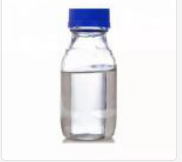Acetone

| Physical and chemical properties | Color and smell state: colorless, transparent and special spicy liquid | ||
| Toxicity: low | Flammability: extremely flammable | ||
| Density: 0.7845 | Volatility: Volatile | ||
| Spontaneous ignition point: 465℃ | Boiling point: 56.53 | ||
| Flash point: -20 | Stability: unstable | ||
| Melting point: -94.9℃ | Acidity and alkalinity: neutral | ||
| Hygroscopicity: moisture absorption | |||
| Solubility: miscible with water, soluble in methanol, ethanol, ether, chloroform, oil, hydrocarbon organic solvents | |||
| Various numbers | CAS: 67-64-1 | HS:29141100 | EINECS: 200-662-2 |
| Uses | Acetone is an important raw material for organic synthesis, used to produce epoxy resin, polycarbonate, organic glass, medicine, pesticides, etc. It is also a good solvent and used as a diluent, cleaning agent, and extractant. Used as a solvent in industries such as smokeless gunpowder, celluloid, cellulose acetate, and spray paint. Used as an extractant in oil and other industries. It is used to prepare organic glass monomer, bisphenol A, diacetone alcohol, hexanediol, methyl isobutyl ketone, methyl isobutyl methanol, phorone, isophorone, chloroform, iodoform, etc. Organic chemical raw materials. | ||
| Hazard category | 3.1 Class low flash point flammable liquid | ||
| Fire-fighting measures | Its vapor and air can form an explosive mixture, which can cause combustion and explosion when exposed to open flames and high heat energy. It can react with oxidants. If the flow rate is too fast, it is easy to generate and accumulate static electricity. Its vapor is heavier than air, and can spread to a considerable distance at a lower place, and will ignite back when it encounters a fire source. Fire fighting method: spray water to cool the container, and if possible, move the container from the fire scene to an open place. If the container in the fire scene has changed color or produced sound from the safety relief device, it must be evacuated immediately. Extinguishing agent: foam, dry powder, carbon dioxide, sand. Extinguishing with water is ineffective. | ||
| Emergency treatment | Skin contact: Take off contaminated clothing and rinse the skin thoroughly with soap and water. Eye contact: Lift the eyelid, rinse with running water or saline, and seek medical attention. Inhalation: quickly leave the scene to a place with fresh air. Keep the airway open. If breathing is difficult, give oxygen. If breathing stops, give artificial respiration immediately and seek medical attention. Ingestion: Drink enough warm water, induce vomiting, and seek medical attention. | ||
| Packaging, storage, transportation | Packed in paint or galvanized drums of 150-160kg/drum, stored in a cool, ventilated warehouse. The remote storage temperature should not exceed 29℃. Keep the container tightly closed. It is forbidden to use mechanical equipment and tools that easily generate sparks. The barreled stack should not be too large, and the wall distance, top distance, column distance and necessary fire inspection walkways should be reserved. It is forbidden to use mechanical equipment and tools that easily generate sparks. There should be a grounding device when canning to prevent static electricity from accumulating. | ||
Next product: Caustic soda (sodium hydroxide)

